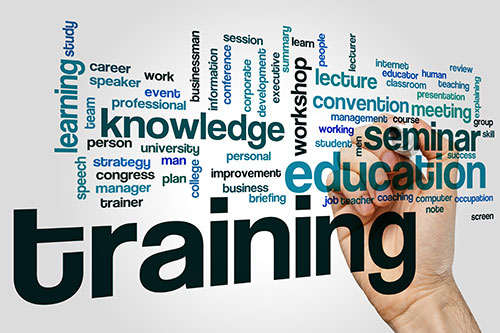March 30, 2023
Training can provide tremendous advantages for your business. You can improve customer service and employee productivity, motivate your staff and keep your operation current. Remember to analyze your needs at the outset and choose the right type of training for your requirements.
You’ll first want to assess whether you currently need to train your employees.
- Assess Your Business: Has it changed? For instance, if you’ve recently installed a point-of-sale program or upgraded your computer system, training can make the transition easier for staff and customers alike. Employees are more accepting of change if they receive adequate training. They will likely feel more supported, and valued, as members of your organization.
- Understand Your Demographic: Are there new factors to be taken account? For instance, has the growing number of baby-boomers resulted in a higher demand for new technology? Keeping an ear to the ground for changes in your customer base will provide you with opportunities for growth, and may result in new training requirements.
- Seek Feedback: Have you asked customers, managers or employees for feedback? You may discover some hidden training needs that translate into opportunities to improve service delivery. There are simple ways you can collect this information, such as customer survey cards and forums for staff to communicate with management.
- Act on Complaints and Frequent Problems: Receiving complaints from customers or staff doesn’t necessarily indicate an employee is a lost cause and must go. Perhaps there is simply a deficiency that could be easily rectified with training. When errors or complaints are brought to your attention, analyze the problem and determine whether training might solve it.
- Prepare New Hires: When you hire new front-line workers, they often lack advanced skills in customer service and communications. Address these right away. Quality of service impacts the visitor experience, which affects your bottom line: training is a must for new hires.
- Retain Employees: Recruiting new hires is one issue; retaining them in the long-run is another. You can reduce employee turnover by making training opportunities available to those seeking to advance their careers within the industry and within your organization.
- Accept the Limits of Training: Not every problem can be solved with training. For instance, if an unhappy employee receives training for a promotion, she might still quit after she receives it, leaving you to train a replacement. Nor will training ensure that a previous problem won’t emerge again. For instance, after he receives training, that front-line worker might still be the target of customer complaints. You might discover that he’s more suitable in another position, or another line of work.
- Prioritize: Take time to evaluate what your organization as a whole stands to gain by training its employees. Where can you make the best use of training? Who can benefit most? Develop a strategic plan you can use in the longer term.
By being proactive in supporting employee training and development on an ongoing basis, you can help your employees to work to their full potential. Assessing where training will be of greatest value in your organization and implementing it in the long-term will ultimately better the customer experience and improve your bottom line.
This article may not be republished without the express permission of the copyright owner identified in the article.
go2HR is BC’s tourism and hospitality , human resources and health & safety association driving strong workforces and safe workplaces that deliver world class tourism and hospitality experiences in British Columbia. Follow us on LinkedIn or reach out to our team.
Return to top


